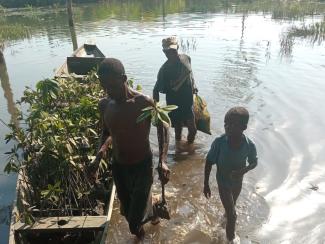
Mangroves are ecosystems distributed in the global tropics composed mainly of unique trees capable of living in saline waters. There are at least 50 species of mangrove trees across the world. According to Conservation International, mangrove forests are found on the saltwater coasts of 118 tropical and subtropical countries, totaling approximately 136,000 square kilometers and making up 0.1 percent of the planet’s surface. Southeast Asia is home to almost a third of all mangroves, with Indonesia alone being home to almost 20 percent. Mangrove forests are being lost at a rate of one to two percent per year, faster than any other type of forest, due to deforestation, agriculture, aquaculture, urban development, and overharvesting.
The importance of mangroves is undeniable. Mangroves store more carbon per unit area than any other ecosystem on Earth, storing up to 10 times more carbon per hectare than terrestrial forests, and also help fight coral bleaching. According to some studies, young corals that grow among mangrove roots in the shade of mangrove trees show greater resilience to bleaching. As delicate ecosystems, mangroves are indicators of pollution and environmental impacts. Mangroves serve as nurseries for biodiversity, which makes them a vital ecosystem, especially for coastal communities. They protect coastlines from erosion and storm damage and act as buffers to storm surges, forming a natural barrier between the ocean and coastal communities; mangroves have been found to reduce storm surge by as much as 50 centimeters per kilometer of mangrove width.
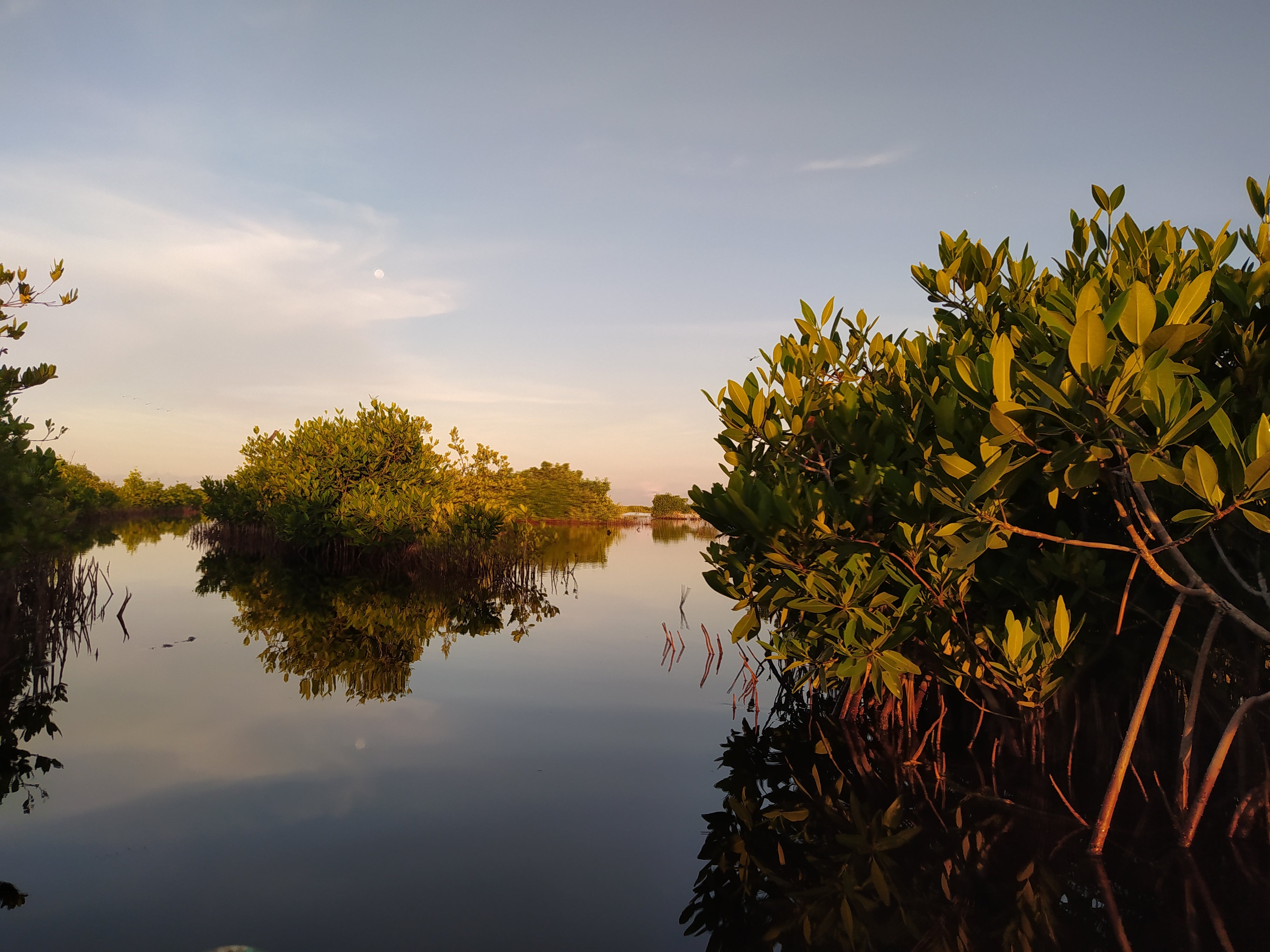
When mangrove forests are destroyed, much more than trees suffer. Many endangered species depend on mangroves for their habitat, and millions of coastal fisher-people and farmers are also negatively impacted. Indigenous communities have developed close relationships with mangroves and have stewarded millennia-old Indigenous Knowledge in their protection, management, and sustainable use. Just as they have done historically, many Indigenous and Afro-descendant communities protect the mangroves by carrying out important projects for them. Here we share three examples of restoration work by Cultural Survival’s Keepers of the Earth Fund grant partners from different regions and Indigenous cultures.
Comité de Cultura y Ambiente, Consejo Comunitario de Barú (Afro-descendants), Colombia
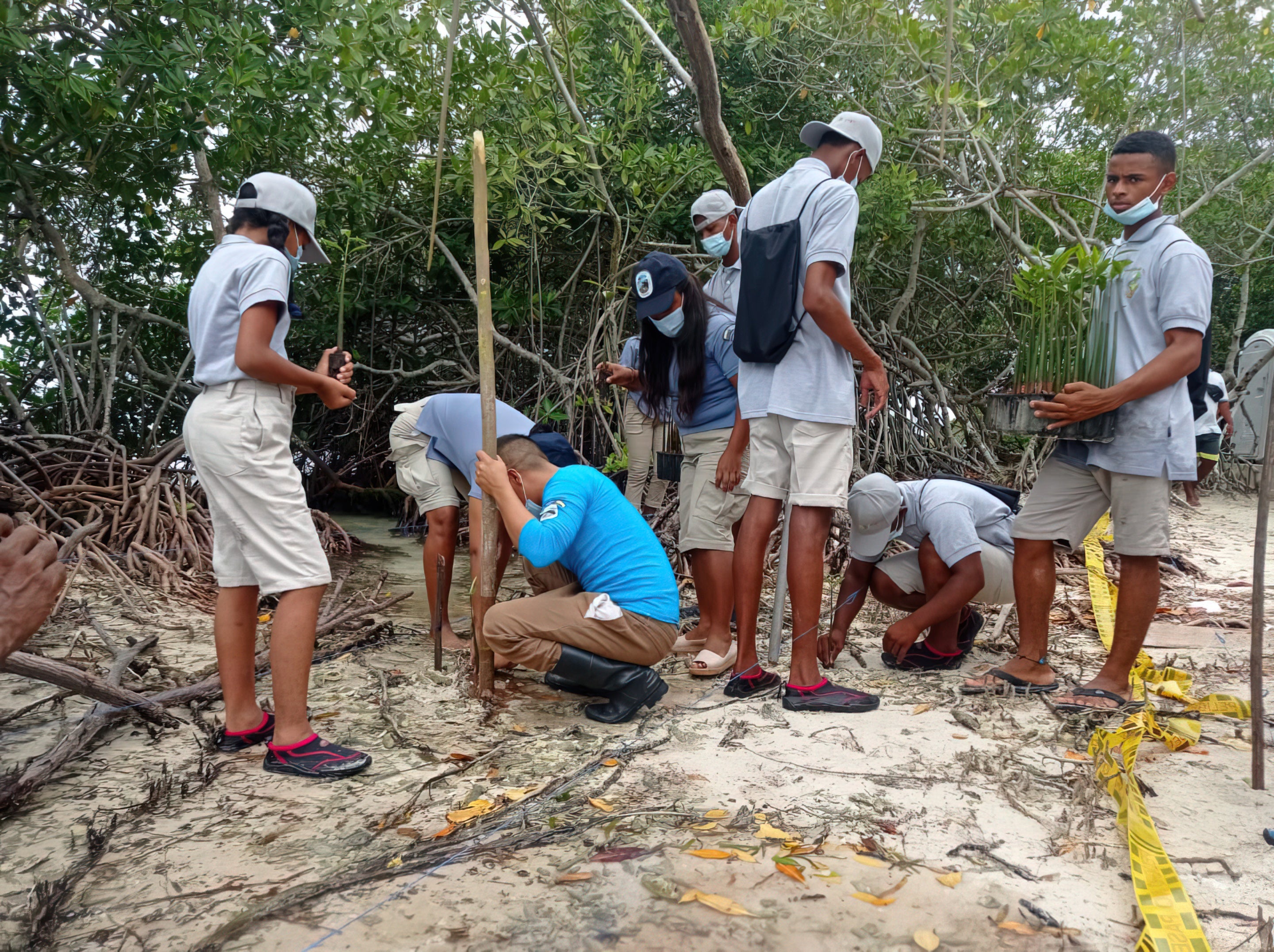
Youth from the Barú community in Colombia replanting mangrove trees. Photo by Community Council of Barú.
To the north of Colombia in the Caribbean is the island of Barú, where the self-proclaimed Afro-descendant ethnic community of Barú lives: a community that, like its distant relatives from Lokiaka Community Development Centre, has a close relationship with the mangrove and seeks its protection. In 2021, through a collaboration with the Keepers of the Earth Fund, they developed a project focused on mangrove conservation.
Their project, “Learn without Reading with Your Eyes Open,” is an innovative and transformative approach that seeks to implement a new learning strategy for the educational community made up of children and young people from the Barú community. In addition to the young population, the Culture and Environment Committee of the Community Council of Barú, which is part of the rural government of Barú, participated closely in the project that trained children and adolescents on topics such as the cultural importance and conservation of the ecosystems of their territory, including the mangrove and other forests, all within the framework of their Barulera identity.
In addition to the workshops, one of the main activities was the collection of 200 mangrove propagules in the areas with the greatest reproduction in the territory. After this, they collectively built a pilot nursery for the planting of mangrove propagules that are cared for by all participants and that will be used later to reforest vulnerable sectors of the Barú mangrove ecosystem. In its future plans, the community seeks to design a strategy for the responsible use of the mangrove ecosystem that generates appropriation and empowerment of other members of the community. This conservation project was key to the education of youth during the COVID-19 pandemic as many rural Indigenous children face obstacles to accessing quality, culturally relevant education in developing countries such as Colombia.
Lokiaka Community Development Centre (Ogoni), Nigeria
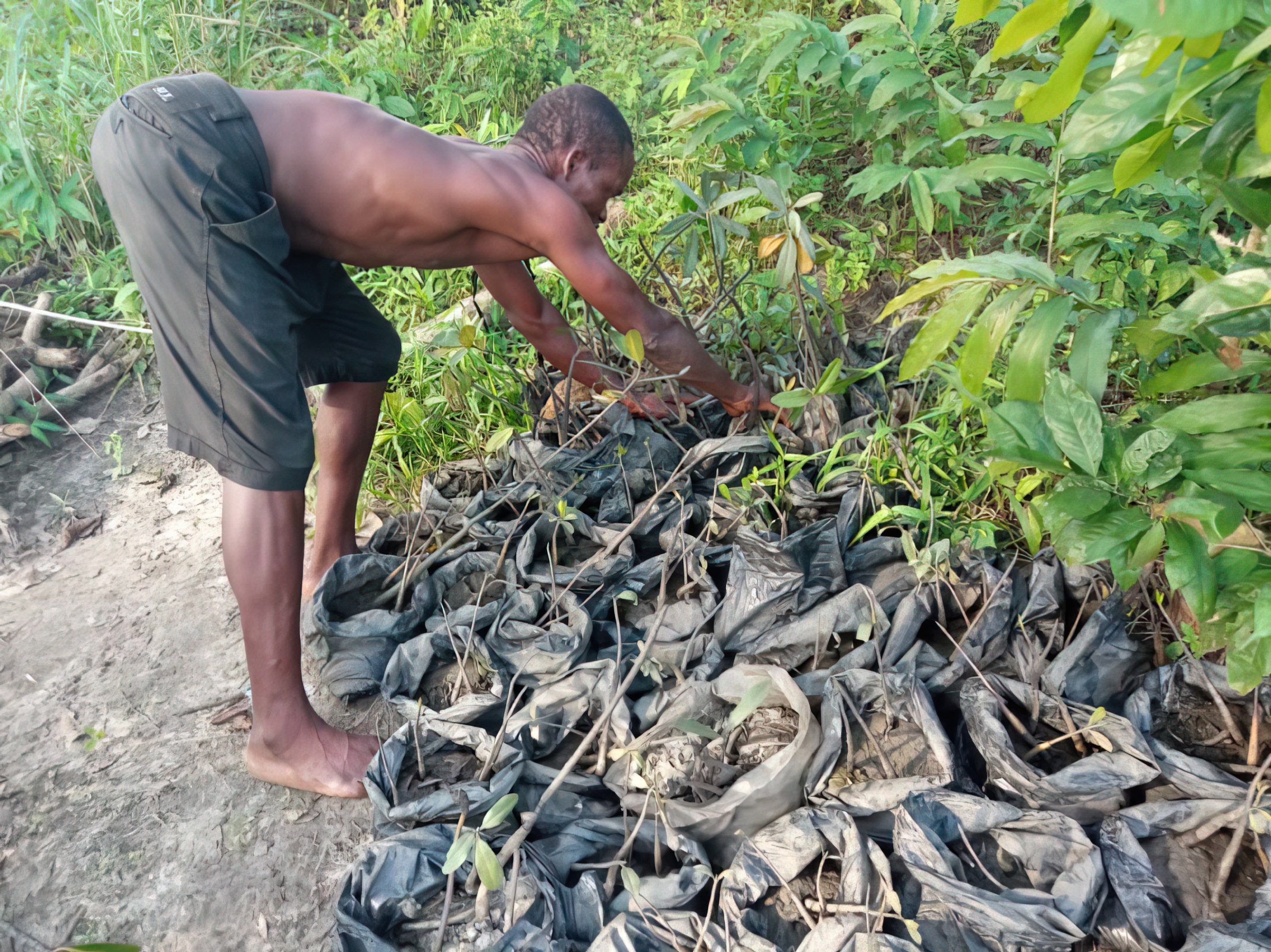
Ogoni youth in Nigeria replanting mangrove trees. Photo by Lokiaka Community Development Centre.
The Ogoni in the Niger Delta region face threats to their livelihood as the quality of their land is depleted and the biodiversity of the local ecosystem deteriorates due to oil and gas extraction. Their farmlands are less fertile and integral plants are becoming extinct, escalating food insecurity. The population of mangroves in the Niger Delta Region has substantially diminished due to clearing for commercial agriculture, urban construction, pollution, oil spills, and runoff containing chemical and biological contaminants. Additionally, the changing climate has brought an influx of cyclones, hurricanes, and tsunamis that cause severe damage to the mangrove population.
Mangroves are extremely versatile in their utility for the Ogoni people. They can be used as water-resistant wood for buildings and furniture, serve as domestic fuel, protect shorelines from erosion, and filter pollutants to maintain water quality. Through a grant from Keepers of the Earth Fund to the Lokiaka Community Development Centre, volunteers at Lokiaka worked to replenish the land by conducting two intensive training sessions with Ogoni women. Workshops taught 65 Indigenous women farmers the skills to start mangrove and fruit tree nurseries. Participants learned about sustainable nursing of mangrove propagules and how to transport them within the mangrove swamp forest of Kwawa. Lokiaka emphasizes the role of Indigenous women farmers in maintaining the health of the land and ecosystem to ensure that women are recognized as important stewards of the land. Their importance cannot be overstated.
With this work, the Ogoni community is contributing to climate resilience in several ways. Mangroves are among the most carbon rich tropical forests and can store twice as much carbon on a per area basis as salt marshes, preventing carbon from escaping into the atmosphere as a greenhouse gas. Carbon storage also results in the accretion of sediment, allowing the coastline to keep up with rising water levels. By training Ogoni women in sustainable agricultural practices, their knowledge of conservation forest practices will continue to rejuvenate the local ecosystems and improve the health of Ogoni communities.
Carey Cooperative, Isla Arena (Maya), Mexico
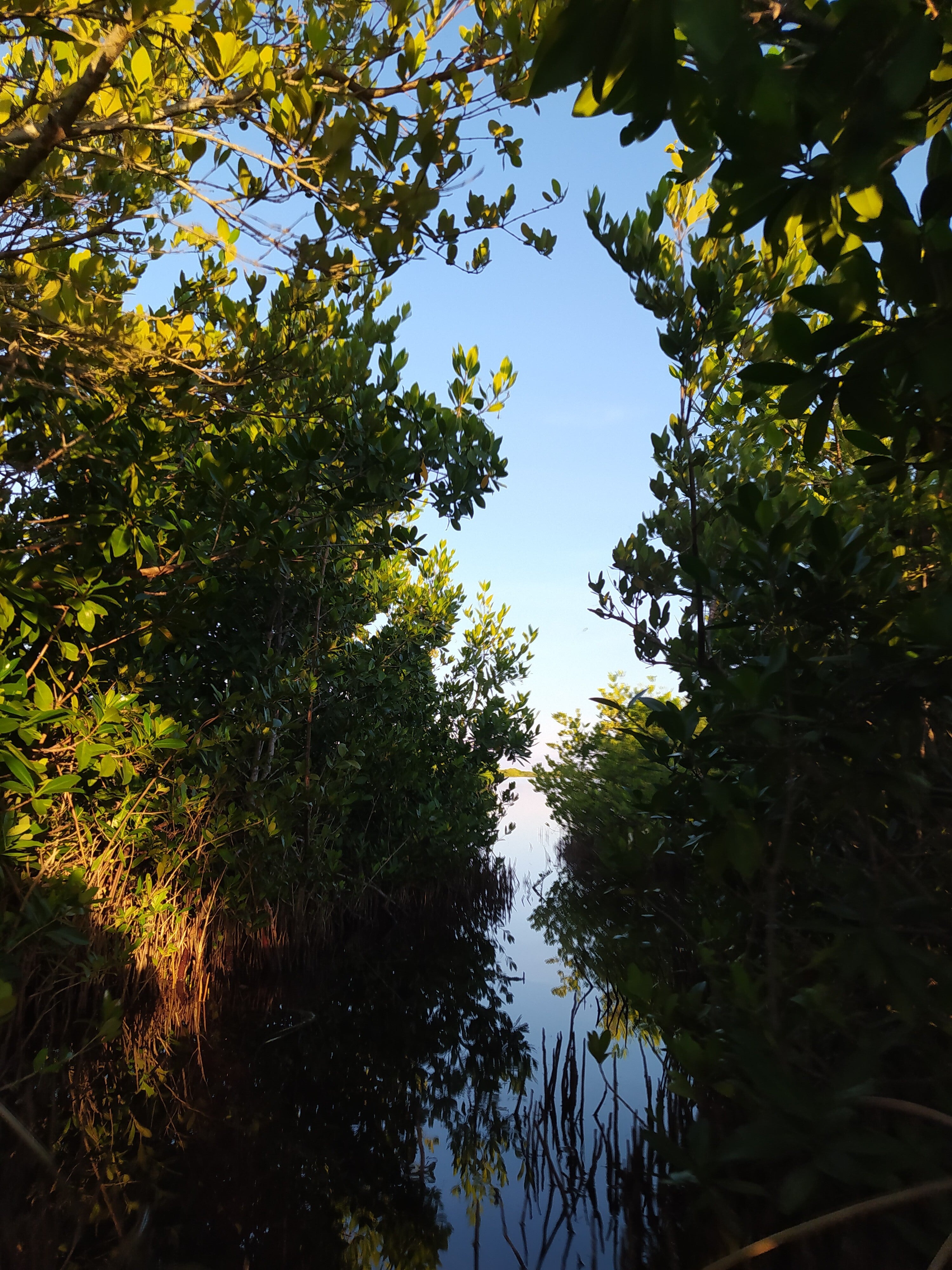
The Isla Arena Maya community lives on an island off the coast of the state of Campeche. Previously they traveled by boat, which made trade or health emergencies complex, so they were happy when a road was built to connect the community with the rest of the territory. However, by doing this without proper planning, the community saw their mangroves begin to die. Acres of them dried up, and birds and other species also started to leave.
After seeing the desolate, arid landscape that brought multiple problems to this fishing-dependent community, community members decided to take action. They developed a plan for the restoration of the mangrove, building canals and bridges to recover the flow of freshwater and saltwater, and implemented a delicate mangrove reforestation plan. This included bringing seeds and seedlings in from other communities to germinate and plant. The process was repeated many times because several plants died due to poor environmental conditions. Now, after 16 years of hard work, thousands of flamingos have returned to the area. The hundreds of small mangroves that have already begun to reproduce on their own are the best evaluators of this important Maya community work. To strengthen its environmental education and conservation work, the Isla Arena Carey Cooperative is partnering with Cultural Survival to establish a community radio station.
The example of the Isla Arena community shows that Indigenous Peoples have to adapt their stewardship practices to maintain their communities’ needs and well being. Within that process comes many lessons, and these learning experiences throughout history have made Indigenous Peoples successful in environmental stewardship, ecosystem restoration and experts in conservation. It is encouraging to see that the Indigenous and Afro-descendant communities, who do not know each other, agree on the important work of mangrove conservation. Their great community work will benefit beyond their territories and for the many generations to come. Cultural Survival is honored to contribute to their efforts through the Keepers of the Earth Fund.
Keepers of the Earth Fund (KOEF) is an Indigenous Led Fund within Cultural Survival designed to support Indigenous Peoples’ community development and advocacy projects. Since 2017, through small grants and technical assistance, KOEF has supported 186 projects in 37 countries totaling $810,470.
